Find out what the garden and propagation teams have been up to this week.
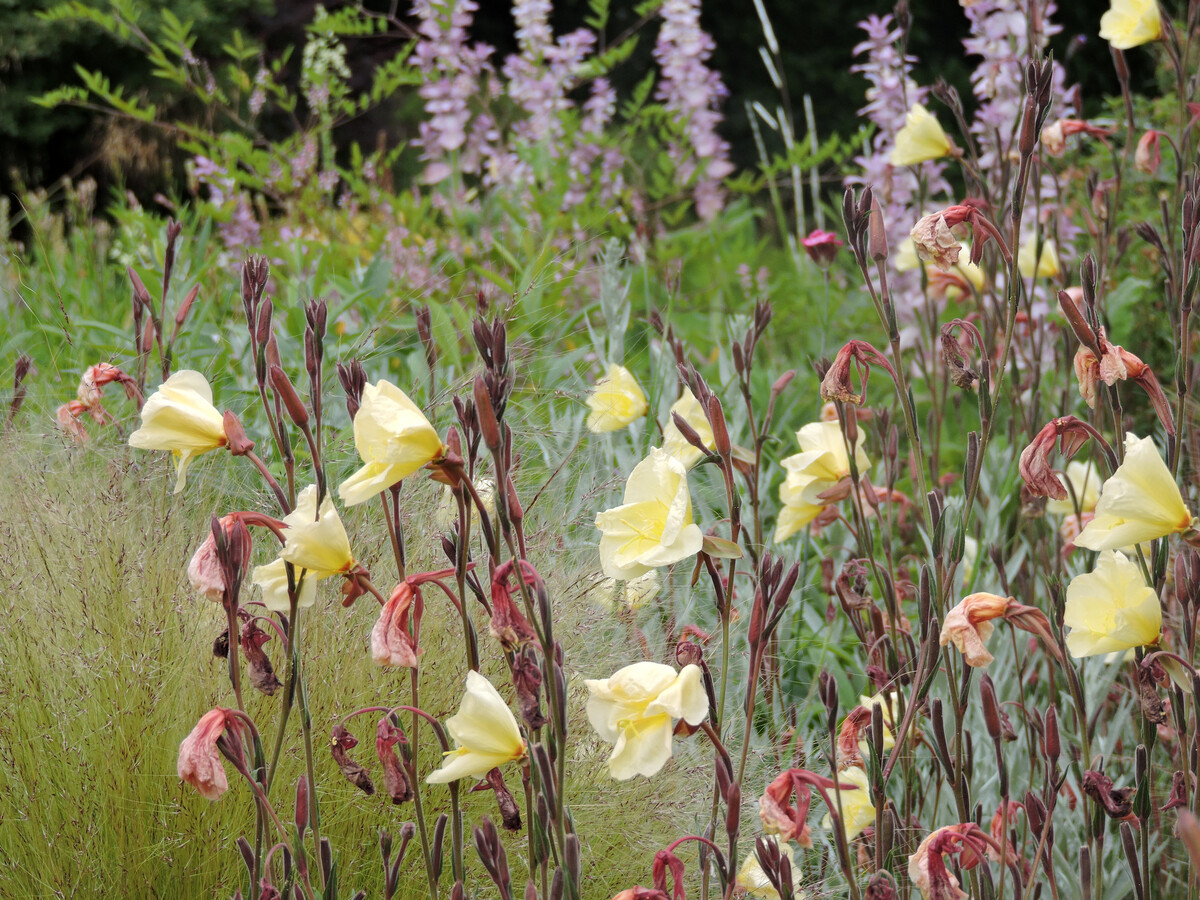
How to grow oenothera (gaura)
![]()
As the garden takes on its late summer/early autumn appearance; fading colours, bleached grasses and architectural seedheads, we take a look at a genus producing subtle flowers which don’t look out of place in a garden teetering on the edge of its seasonal shift.
Oenothera
Originating from the Americas, growing in open, sandy and rocky areas, oenothera is at home growing in our Gravel Garden and other free draining spots across Beth’s garden flowering all summer long. We grow perennial forms here, plants from the old oenothera genus (evening primrose) with saucer-shaped flowers, and those previously known as gaura which produce masses of delicate, star-shaped flowers.
A favourite for late season interest is Oenothera lindheimeri, whose moth-like flowers hover above and among other sun-loving plants such as Euphorbia epithymoides, Verbena bonariensis and Pseudodictamnus acetabulosus.
Wildlife credentials with Dr Chris Gibson
The flowers of the majority of species are most open and fragrant in the evening when they are visited mainly by the wasps and moths that are active at that time of the day. Some forms, especially those formerly called gaura, flower by day and are much visited by both bumblebees and butterflies. In autumn, if they are not 'tidied up', the spikes of seed pods may be visited by goldfinches and other seed-eaters. Several species and hybrids are now to be found naturalized widely, especially in the lowlands of England and Wales, on brownfield sites and sand-dunes.
Great oenothera companion plants:
Favourites in Beth’s Garden
Oenothera lindheimeri- Flowers from midsummer through to autumn when there is nothing else like it. White flowers, pink flushed, float for weeks among graceful branches set with small willow-like leaves. Height and spread: 1.2m x 90cm
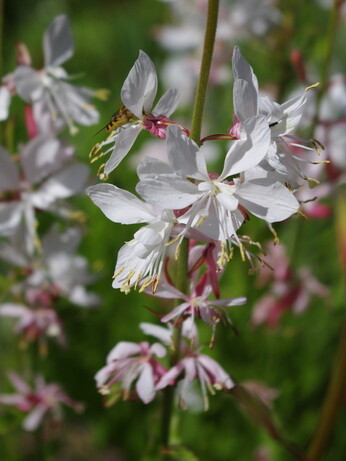
Oenothera lindheimeri ‘Siskiyou Pink’- Wire-thin, branching stems are bowed with spires of four-petalled flowers, almost white at the edges, deepening to rose in the centre. The massed effect of hovering rose-pink butterflies is a joy for weeks from midsummer to late autumn. Height and spread: 50cm x 40cm
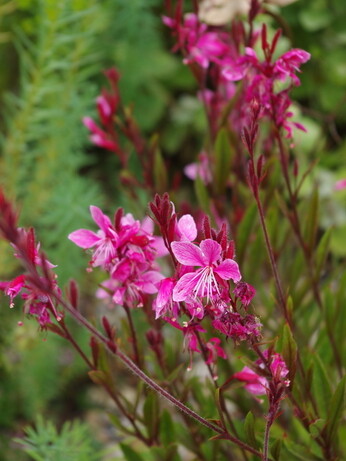
Oenothera lindheimeri ‘Siskiyou Pink’
Oenothera speciosa ‘Pink Petticoats’- A spreading perennial with mid-green leaves. Saucer-shaped, very fragrant white flowers, with pink veining and suffused pink around the edges from early summer to autumn. Height and spread: 30cm x 30cm
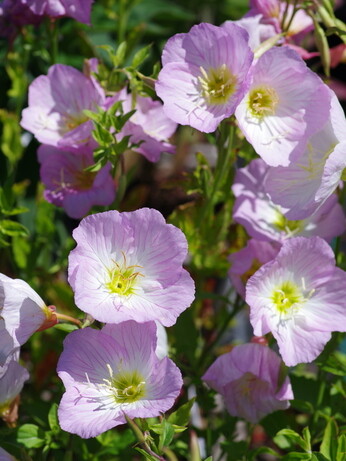
Oenothera speciosa ‘Pink Petticoats’
Oenothera glabra- A choice plant, introduced by Clarence Elliott. Small basal rosettes of round, shining, mahogany leaves produce stiff stems set with enamelled-red pointed buds opening shallow, cup-shaped yellow flowers in the summer. Height and spread: 30cm x 30cm
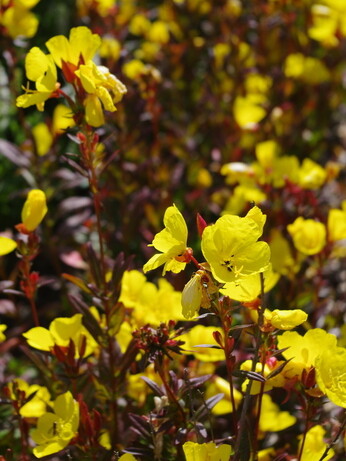
Oenothera lindheimeri ‘Jo Adela’- Another variegated form discovered and named here. Dark green foliage with a lighter green-yellow, irregular centre. Flowers opening white from pink buds. Flowering equally as long as the species. Height and spread: 75cm x 50cm

Oenothera lindheimeri ‘Jo Adela’
![]()

COMMENTS